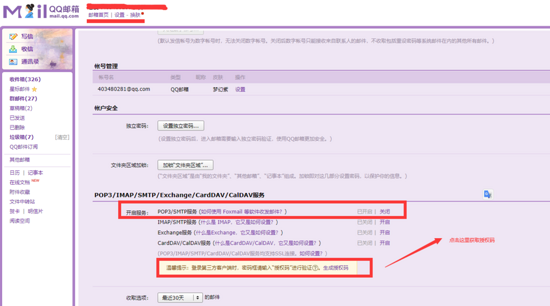Node.js实现简单管理系统
- 作者: 达?矢抾哆拉?
- 来源: 51数据库
- 2021-08-29
一、简述
- 主要是面向初学者的node攻略,需要有node基础(了解一点npm和express)。
- 使用express框架+mongodb数据库,前端使用的是原生html。
- 实现了对图书的增删改查基本功能。
- 源代码会上传到github配合博客一起看。点击这里看源代码
- 为了方面没有写css。
二、项目结构
虽然是一个很简单的后台吧,但是还是应该有一个清晰的结构:
1.index.js 入口文件
2.model.js 模型文件
3.router.js 路由文件
4.views 页面文件
– index.html 主页
– new.html 新建页
– edit.html 编辑页
5.node_modules 模块文件夹
6.db 数据库文件夹
三、初始化项目
因为我们使用的是express框架,先用npm下载好express后,创建index.js快速搭配一个后台
const express = require('express')
const app = express()
app.get('/',(req,res) => {
res.send('hello world')
})
app.listen(3000,() => {
console.log('server is running...')
})
打开终端使用node(推荐使用nodemon)运行后台,终端显示running而且localhost:3000渲染上了hello world证明express初始化成功了。
四、配置路由和渲染模块
1.使用npm下载art-template和express-art-template,并在index.js中加入
app.engine('html',require('express-art-template'))
2.使用原生html的话是后端配置路由,所以我们将一开始对‘/'的get请求删掉,转而新建一个router.js并添加如下代码:
const express = require('express')
//创建路由实例
const router = express.router()
router.get('/',(req,res) => {
res.render('index.html',{
books: [{ //可以先传一个假数据测试下
name: 'a',
author: 'aa',
press: 'aaa'
}]
})
})
module.exports = router //暴露router
上面这段代码就完成了后端加载主页并将数据渲染上去的功能。
当然要把router引入到入口文件中,在index.js中加入:
const router = require('./router')
app.use(router)
五、完成首页
首页没啥好说的,上一个表格就得啦。
像each这种形式在后端是比较常见的表达,和foreach非常像,读取数组按行渲染到html中。
<div>
<table>
<thead>
<tr>
<th>书名</th>
<th>作者</th>
<th>出版社</th>
<th>操作</th>
</tr>
</thead>
<tbody>
{{ each books }}
<tr>
<td>{{ $value.name }}</td>
<td>{{ $value.author }}</td>
<td>{{ $value.press }}</td>
<td> <!--这里路由后面再添加-->
<a >编辑</a>
<a >删除</a>
</td>
</tr>
{{ /each }}
</tbody>
</table>
<a >添加新书</a> <!--跳转至添加页-->
</div>
六、数据库连接+模型创建
- 创建model.js并npm安装mongoose
- 接下来都是常规操纵了,连接数据库,创建schema,导出schema
- 对于每一个属性这里为了方面只给一个type
const mongoose = require('mongoose')
mongoose.connect('mongodb://localhost/book',{ usenewurlparser: true , useunifiedtopology: true })
const schema = mongoose.schema
const bookschema = new schema({
name: {
type: string,
},
author: {
type: string,
},
press: {
type: string,
}
})
module.exports = mongoose.model('book',bookschema)
七、路由导入数据库
在router.js中引入book
const book = require('./model')这样我们就可以在router中利用book来进行数据库的增删改查了。
mongoose的方法都可以在文档中查到。
渲染主页就可以改成如下代码,在数据库中查找所有项然后传到前端。
router.get('/',(req,res) => {
book.find((err,book) => { //book就是查找的所有对象是一个数组
res.render('index.html',{
books: book
})
})
})
八、设计添加页的html和路由
首先来分析一个添加页的逻辑代码,html部分我们需要一个表单,填写书的具体信息后存到数据库里,所以嘞,我们就需要一个get路由加载这个页面,同时需要一个post请求接收前端发送过来的数据。
html部分很简单,form+input就可以搞定,记得action的路径要一致,name也要一样哦。
<form action="/new" method="post"> <div > <label for="">书名</label> <input type="text" name="name" > </div> <div > <label for="">作者</label> <input type="text" name="author" > </div> <div > <label for="">出版社</label> <input type="text" name="press" > </div> <button type="submit">submit</button> </form>
get路由非常简单,直接渲染new.html即可。
但是post路由就有一个问题,如何拿到前台传过来的数据呢,这里就需要用到body-parser中间件了。它就可以获取请求体(req.body) ——包含了name、author和press三个属性的json对象。
想要使用它先得npm安装并引入,同时还要加上两条语句(要放在use router的前面!很重要! )
app.use(bodyparser.urlencoded({ extended: false }))
app.use(bodyparser.json())
接下来就是保存新增数据的操作了,在mongoose文档中可以找到对应的save方法。
then是一个回调函数,是保存后的操作。
router.post('/new',(req,res) => {
console.log(req.body);
new book(req.body).save().then(() => {
res.redirect('/')
})
})
九、删除和修改
- 看mongoose文档可知不管是删除查找修改都可以通过id来索引。
- <a $value.id }}">编辑</a>所以我们直接使用get方法把id值传过去,后台通过req.query.id就能拿到id的具体值。
- 修改的具体操作和新建类似,只是value赋了初始值而已。
以上就是本文的全部内容,希望对大家的学习有所帮助,也希望大家多多支持。



